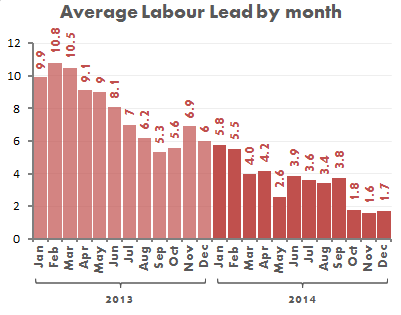The British will have an election this May, but it won’t be traditionally British. Over the past decade, U.K. politics have taken on a mix of features of both the U.S. and Continental European systems.
From the U.S. has come extensive focus on the personalities and views of Prime Ministerial candidates, up to and including British adoption of our tiresome tradition of having televised debates between the candidates (Who dressed the best? Who had the best zinger of the night? Whose children are cutest? Ugh.). In the Westminster system, you are voting for a party and not an individual leader. Indeed, the former can replace the latter if they wish and go right on governing. Yet people increasingly carry on as if Number 10 is the White House with one person serving as an executive with a power base separate from the legislature.
Over-polling and overanalyzing poll data are other imports from the states. Polls were once rare in the U.K., particularly long before an election. But these days they have three or more a week starting long before the prior government is even 75% through its term. This over polling is coupled with many tedious new stories and op-eds about why Ed Milliband has lost 1 point since Monday, and why Nigel Farage has gained 2. That’s a lot of warm wind expelled over measurement error.
Far more consequential is the fading of the British sensibility of “giving the other fellow a chance” when you didn’t like whoever was in government. Outside of wartime, coalition governments used to be uncommon in Britain. But today’s British voters, like many of their Continental European counterparts, seem unwilling to let any party have control. Though wearied with the Blair-Brown Labour government of 1997-2010, they gave no party a majority in the last election. They are even more fractured now, to the point that 5 different parties may garner at least 5% of the vote in 2015 (Tory, Labour, Green, Liberal Democrat and Scottish Nationalist). Coalition governments are less stable than one party governments and often have difficulty getting things done. Ironically, this can lead to less trust in major political parties, producing more fracturing of the electorate the next time round.
To get a sense of how this fracturing is affecting the 2015 race, take a look at this chart from Anthony Wells’ UK Polling Report. While obsessing about movement in daily polls is usually a waste of time, aggregating large numbers of polls can tell you a lot, and that is what Wells has done.
Despite many voters being unhappy with the current Tory-LibDem government, Labour’s lead over the Conservatives has been shrinking steadily for two years. Yet the key point is what is not in the chart: The proportion of people intending to vote Conservative has stayed flat over this period. Labour is losing votes to small parties, likely leading to a hung parliament with up to five political parties at the negotiating table. Denied a majority in 2010, the Conservatives couldn’t really govern as they wished, and they may be thrown out in 2015 in favor of a Labourites who can’t really govern as they wish either. Thoroughly un-British indeed.
